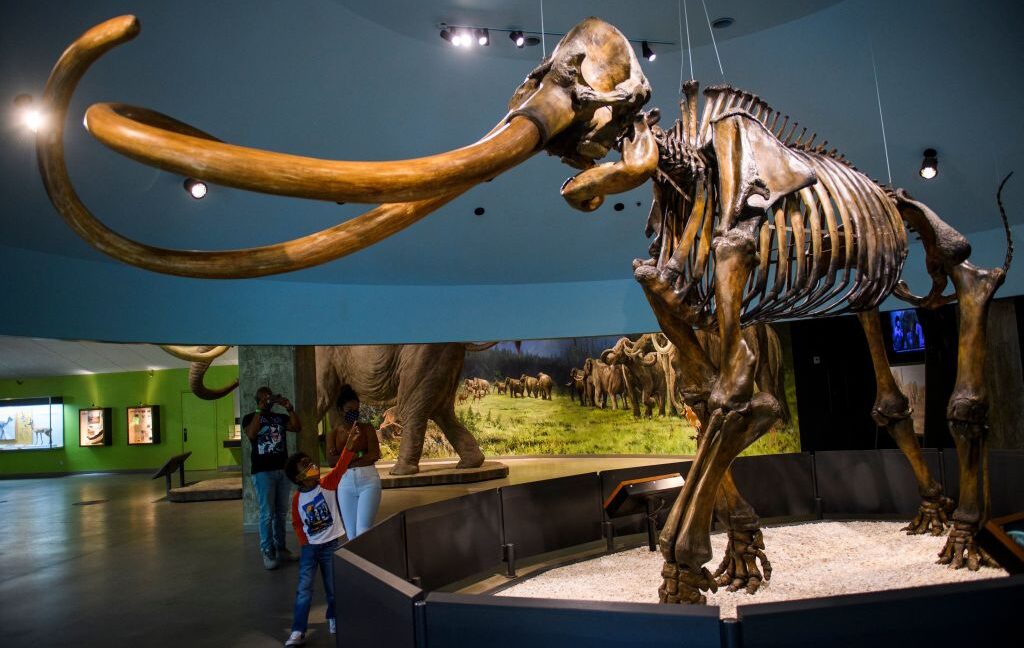Science
Central American Mammoths Reveal Surprising Genetic Links

Recent research has uncovered distinct genetic characteristics in Central American mammoths that challenge previous assumptions about their lineage. A collaborative study involving Mexican and European researchers has found that mammoth bones unearthed in the Basin of Mexico, which includes Mexico City, form a unique genetic cluster. This discovery suggests that these mammoths are more closely related to each other than to either the woolly mammoth or the Columbian mammoth.
Mammoths are often perceived as a singular species, characterized by their large size and fur. In reality, there were multiple species, including the Eurasian steppe mammoth, the Arctic-adapted woolly mammoth, and the late-evolving Columbian mammoth found in North America. The genetic analysis indicates that the woolly mammoth is an offshoot of the steppe mammoth lineage and was the first to migrate into North America. The Columbian mammoth’s origins, however, have been less clear, leading researchers to explore its genetics in greater depth.
Obtaining ancient DNA from warmer climates like Central America poses challenges, as DNA typically deteriorates quickly in such environments. Previous studies of the Columbian mammoth were primarily conducted in colder regions, where the species likely cohabitated with woolly mammoths. These studies have produced conflicting results, with some genetic data indicating hybridization between steppe and woolly mammoths, while other samples suggested a separate lineage.
The research team specifically sought to analyze mitochondrial DNA, which is inherited maternally and often survives better than nuclear DNA. The project focused on the Basin of Mexico, an area rich in mammoth fossil remains. Over 100 mammoth individuals were discovered during the construction of Mexico City’s international airport. From 83 samples collected, the researchers successfully obtained 61 new mitochondrial genomes, with 28 being of sufficiently high quality for analysis.
By constructing a family tree from this genetic data alongside existing samples from Columbian and woolly mammoths, the researchers found a surprising arrangement. All Mexican mammoths clustered together as a distinct group, with three subgroups identified within this cluster. Interestingly, some Columbian mammoths from northern regions were found to be more closely related to woolly mammoths than to their Mexican counterparts.
This unexpected finding suggests that rather than being determined solely by species, mitochondrial DNA may also reflect geographic proximity. The researchers propose two explanations for this phenomenon. The first posits that the Columbian mammoth was not a single species but rather a collection of hybrid populations. These populations may have been somewhat isolated from one another due to geographic distance.
The second explanation, favored by the researchers, is that the North American woolly mammoth population contained diverse mitochondrial lineages prior to any hybridization. If significant numbers of individuals were involved in these hybridization events, it is plausible that some of these lineages contributed to the genetic makeup of the Columbian mammoth.
Despite the intriguing findings, the study highlights the limitations of relying solely on mitochondrial DNA for a complete understanding of these ancient populations. The researchers emphasize the need for further examination of Columbian mammoths that remained in northern regions, where DNA preservation is more favorable.
As this research advances, it contributes to a more nuanced understanding of mammoth evolution, revealing the complex interactions between species and their environments. The findings will be published in the journal Science in 2025. Further investigation into these ancient creatures promises to enrich our knowledge of their genetic history and ecological adaptations.
-

 Education3 months ago
Education3 months agoBrandon University’s Failed $5 Million Project Sparks Oversight Review
-

 Science4 months ago
Science4 months agoMicrosoft Confirms U.S. Law Overrules Canadian Data Sovereignty
-

 Lifestyle3 months ago
Lifestyle3 months agoWinnipeg Celebrates Culinary Creativity During Le Burger Week 2025
-

 Health4 months ago
Health4 months agoMontreal’s Groupe Marcelle Leads Canadian Cosmetic Industry Growth
-

 Science4 months ago
Science4 months agoTech Innovator Amandipp Singh Transforms Hiring for Disabled
-

 Technology3 months ago
Technology3 months agoDragon Ball: Sparking! Zero Launching on Switch and Switch 2 This November
-

 Education3 months ago
Education3 months agoRed River College Launches New Programs to Address Industry Needs
-

 Technology4 months ago
Technology4 months agoGoogle Pixel 10 Pro Fold Specs Unveiled Ahead of Launch
-

 Business3 months ago
Business3 months agoRocket Lab Reports Strong Q2 2025 Revenue Growth and Future Plans
-

 Technology2 months ago
Technology2 months agoDiscord Faces Serious Security Breach Affecting Millions
-

 Education3 months ago
Education3 months agoAlberta Teachers’ Strike: Potential Impacts on Students and Families
-

 Science3 months ago
Science3 months agoChina’s Wukong Spacesuit Sets New Standard for AI in Space
-

 Education3 months ago
Education3 months agoNew SĆIȺNEW̱ SṮEȽIṮḴEȽ Elementary Opens in Langford for 2025/2026 Year
-

 Technology4 months ago
Technology4 months agoWorld of Warcraft Players Buzz Over 19-Quest Bee Challenge
-

 Business4 months ago
Business4 months agoNew Estimates Reveal ChatGPT-5 Energy Use Could Soar
-

 Business3 months ago
Business3 months agoDawson City Residents Rally Around Buy Canadian Movement
-

 Technology2 months ago
Technology2 months agoHuawei MatePad 12X Redefines Tablet Experience for Professionals
-

 Business3 months ago
Business3 months agoBNA Brewing to Open New Bowling Alley in Downtown Penticton
-

 Technology4 months ago
Technology4 months agoFuture Entertainment Launches DDoD with Gameplay Trailer Showcase
-

 Technology4 months ago
Technology4 months agoGlobal Launch of Ragnarok M: Classic Set for September 3, 2025
-

 Technology4 months ago
Technology4 months agoInnovative 140W GaN Travel Adapter Combines Power and Convenience
-

 Science4 months ago
Science4 months agoXi Labs Innovates with New AI Operating System Set for 2025 Launch
-

 Top Stories2 months ago
Top Stories2 months agoBlue Jays Shift José Berríos to Bullpen Ahead of Playoffs
-

 Technology4 months ago
Technology4 months agoNew IDR01 Smart Ring Offers Advanced Sports Tracking for $169










